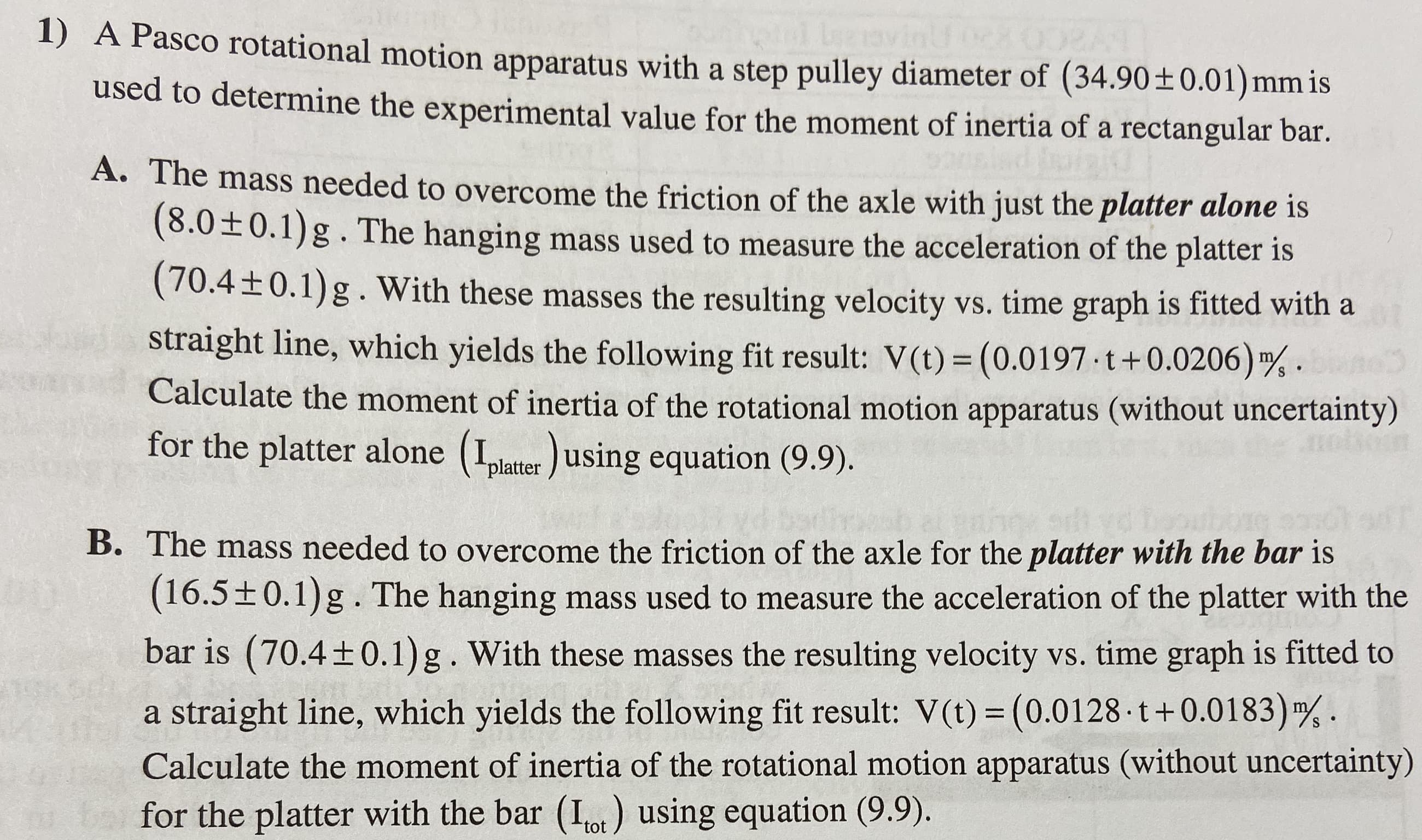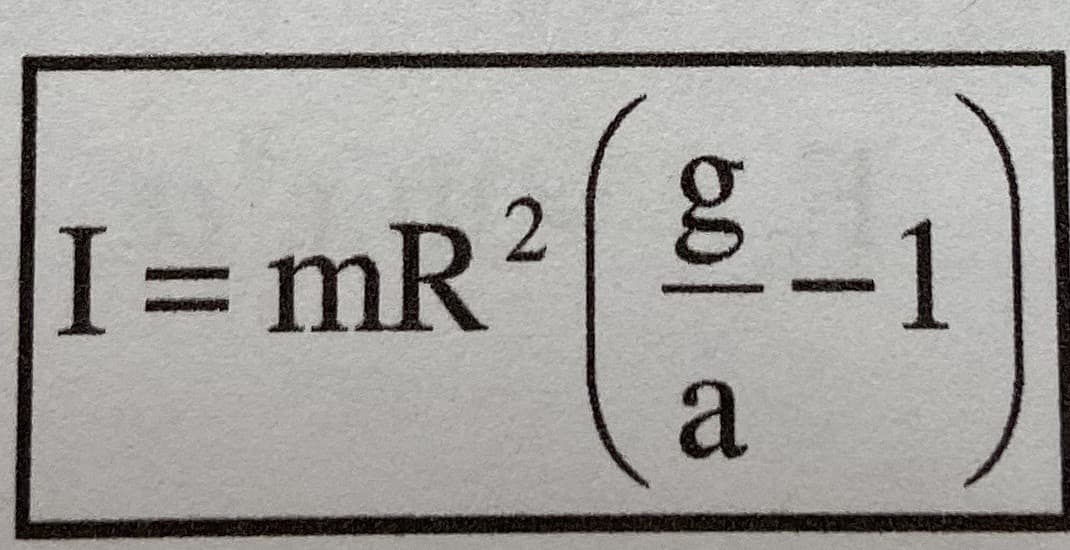1) A Pasco rotational motion apparatus with a step pulley diameter of (34.90 ± 0.01) mm is used to determine the experimental value for the moment of inertia of a rectangular bar A. The mass needed to overcome the friction of the axle with just the platter alone is (8.0±0.1)g.The hanging mass used to measure the acceleration of the platter is (70.4+0.1) g. With these masses the resulting velocity vs. time graph is fitted with a straight line, which yields the following fit result: V(t) (0.0197 t+0.0206) 4 Calculate the moment of inertia of the rotational motion apparatus (without uncertainty) for the platter alone (plater using equation (9.9). S e s B. The mass needed to overcome the friction of the axle for the platter with the bar is (16.5±0.1)g.The hanging mass used to measure the acceleration of the platter with the bar is (70.4 0.1)g . With these masses the resulting velocity vs. time graph is fitted to straight line, which yields the following fit result: V(t) (0.0128 t + 0.01 83) Calculate the moment of inertia of the rotational motion apparatus (without uncertainty) bafor the platter with the bar (Iot) using equation (9.9) I= mR2 -1 a
1) A Pasco rotational motion apparatus with a step pulley diameter of (34.90 ± 0.01) mm is used to determine the experimental value for the moment of inertia of a rectangular bar A. The mass needed to overcome the friction of the axle with just the platter alone is (8.0±0.1)g.The hanging mass used to measure the acceleration of the platter is (70.4+0.1) g. With these masses the resulting velocity vs. time graph is fitted with a straight line, which yields the following fit result: V(t) (0.0197 t+0.0206) 4 Calculate the moment of inertia of the rotational motion apparatus (without uncertainty) for the platter alone (plater using equation (9.9). S e s B. The mass needed to overcome the friction of the axle for the platter with the bar is (16.5±0.1)g.The hanging mass used to measure the acceleration of the platter with the bar is (70.4 0.1)g . With these masses the resulting velocity vs. time graph is fitted to straight line, which yields the following fit result: V(t) (0.0128 t + 0.01 83) Calculate the moment of inertia of the rotational motion apparatus (without uncertainty) bafor the platter with the bar (Iot) using equation (9.9) I= mR2 -1 a
Related questions
Question
How to answer part A

Transcribed Image Text:1) A Pasco rotational motion apparatus with a step pulley diameter of (34.90 ± 0.01) mm is
used to determine the experimental value for the moment of inertia of a rectangular bar
A. The mass needed to overcome the friction of the axle with just the platter alone is
(8.0±0.1)g.The hanging mass used to measure the acceleration of the platter is
(70.4+0.1) g. With these masses the resulting velocity vs. time graph is fitted with a
straight line, which yields the following fit result: V(t) (0.0197 t+0.0206) 4
Calculate the moment of inertia of the rotational motion apparatus (without uncertainty)
for the platter alone (plater using equation (9.9).
S
e s
B. The mass needed to overcome the friction of the axle for the platter with the bar is
(16.5±0.1)g.The hanging mass used to measure the acceleration of the platter with the
bar is (70.4
0.1)g . With these masses the resulting velocity vs. time graph is fitted to
straight line, which yields the following fit result: V(t) (0.0128 t + 0.01 83)
Calculate the moment of inertia of the rotational motion apparatus (without uncertainty)
bafor the platter with the bar (Iot) using equation (9.9)

Transcribed Image Text:I= mR2
-1
a
Expert Solution
This question has been solved!
Explore an expertly crafted, step-by-step solution for a thorough understanding of key concepts.
This is a popular solution!
Trending now
This is a popular solution!
Step by step
Solved in 3 steps with 3 images
